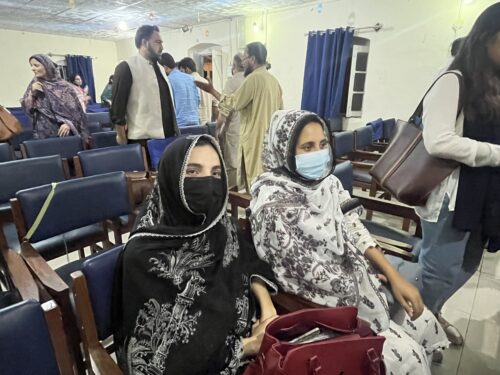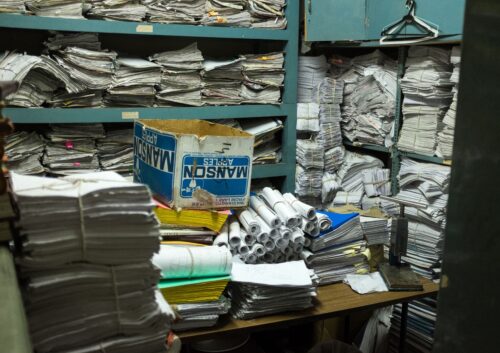Best of SAPIENS 2021

Amid forest fires, the storming of the U.S. Capitol, private space flights and more, 2021 saw the pandemic bed in. Each time it felt the world was gaining control of the virus, things spiraled again. The global death toll from COVID-19 has topped 5 million, with no clear trend to forecast the future.
At the close of the year, about half the world, or around 4 billion people, have had at least one dose of a COVID-19 vaccine, though access to lifesaving vaccines remains extremely unequal globally. Meanwhile, in many countries where vaccines are now widely available, including the United States, vaccine hesitancy remains a social problem—caused in part by a long history of mistrust of government authorities and the medical community.
Anthropologists continue to work hard to help understand and combat the pandemic, in particular its unequal impacts on often-marginalized groups, including Black, Asian, and Indigenous people. Humanity’s persistent habits of scapegoating, prejudice, and racism remain hot topics for study. Such biases and inequalities can be baked into entrenched economic and political structures like the criminal justice system or even the Olympics—this year’s Summer Games in Japan saw several blowups over gender issues. The anthropological work of celebrating humanity’s similarities and differences can hopefully promote equity, inclusion, and justice when it is needed most.
That may be particularly welcome for those experiencing strife. The Israeli-Palestinian crisis escalated in 2021, prompting statements of solidarity with Palestinian people from some anthropological organizations. Many other nations saw coups or challenges to peace, including the United States. On January 6, a mob stormed the U.S. Capitol in protest of President Donald Trump’s defeat in the 2020 presidential election; one anthropologist responded with a call for a Truth Commission on White Supremacy. Notably, this came in the same year as the centennial of the horrific 1921 Tulsa Race Massacre in Oklahoma—an event that anthropologists are still helping to recover bodies from.
For many anthropologists, such events have highlighted the need for their field, too, to actively dismantle structures rooted in colonialism and anti-Blackness—for instance, by grappling with the field’s role in the development of racist taxonomies, the holding of objects in museums that ought to be repatriated, and the unjust sourcing of many teaching skeletons. In April, a journalist revealed that the remains of children killed in the 1985 police bombing of MOVE, a Black revolutionary organization in Philadelphia, had shockingly been held without the family’s consent and used as a teaching tool in a Princeton University class.
Starting in June, an unprecedented heatwave spurred by climate change took hold, lighting many wildfires across Eurasia, North Africa, and the North American west coast. In August, the Intergovernmental Panel on Climate Change released the physical science installment of its Sixth Assessment Report, concluding that the effects of human-caused climate change are now “widespread, rapid, and intensifying.” Anthropologists continue to catalogue the impacts of climate change on communities, such as Indigenous horse breeders in Siberia, who now face permafrost loss—while also digging deep into humanity’s place within the broad scope of nature, with some scholars highlighting how wildlife and forests also deserve an equal voice.
If the problems on Earth are not enough, humanity’s ever-expanding reach into outer space also spurred controversy in 2021. This year saw a drone flight on Mars, significant work on the Chinese space station, and several firsts in private space flight. While technologically impressive, many worry that such large expenditures are a distraction from humanitarian work and that violent Earthly histories of unequal ownership and resource extraction may be replicated elsewhere.
Against this backdrop of human highs and lows, we share the SAPIENS editorial team’s top 10 stories of 2021, listed in chronological order.
Martin Carver
Sutton Hoo’s Story Goes Deeper Than The Dig
The archaeologist in charge of the Sutton Hoo burial mounds recounts what has been discovered at the famous English site since the 1930s excavation portrayed in the movie The Dig.
Maria Franklin
Preserving the Voices of the Antioch Colony
Archaeologists are working with descendants to preserve the history of a community in Texas formed by Black freedmen and women after the Civil War.
Emily Laber-Warren
The Fight to Secure Rights for Rainforests
The Sarayaku people of Ecuador seek legal protection for Amazonian plants and animals. Anthropologist Eduardo Kohn’s work on “thinking forests” might help.
Michele Friedner
Deaf and Incarcerated in the U.S.
An anthropologist investigates how U.S. prison policies systematically deny deaf incarcerated people adequate access to hearing aids—severely hindering their sensory engagement and quality of life.
Francine Russo
Chasing the Myths of Mexico’s “Superrunners”
The Rarámuri people’s ancient traditions of footracing have captured global attention. New research by a biological anthropologist and his colleagues debunks stereotypes and contextualizes the community’s famous races.
Lidio Valdez and Cirilo Vivanco
Peru’s Incan Rope Bridges Are Hanging by a Thread
A remarkable ancient technology and tradition of creating suspension bridges to unite communities in the Andes is sadly fading into history.
Carolyn Wilke
The Resistance and Ingenuity of the Cooks Who Lived in Slavery
Archaeologists are investigating foodways and re-creating meals prepared by enslaved people who lived in North America and the Caribbean to better understand their everyday lives and fill gaps in the historical record.
Kimberley D. McKinson
Lessons From Mars—and Jamaica—on Sovereignty
The billionaire space race thrives on romantic ideas of colonizing “the last frontier.” An anthropologist looks to Jamaican histories of colonization to show why such narratives are so dangerous—and offers an alternate vision of Black freedom in the Sovereign State of Accompong.
Sophie Chao
Allying With Parasites to Fight Industrial Oil Palm
In West Papua, industrial oil palm plantations threaten Marind people’s ways of life. Some in the community find solidarity with resilient parasite species—beetles, rats, fungi, and many more—that attack oil palm trees from within.
Jason Vasser-Elong
Window (poem)
A poet-anthropologist of the African diaspora gives voice to the power of collective memory and place. (“Window” is part of the collection Lead Me to Life: Voices of the African Diaspora.)

























